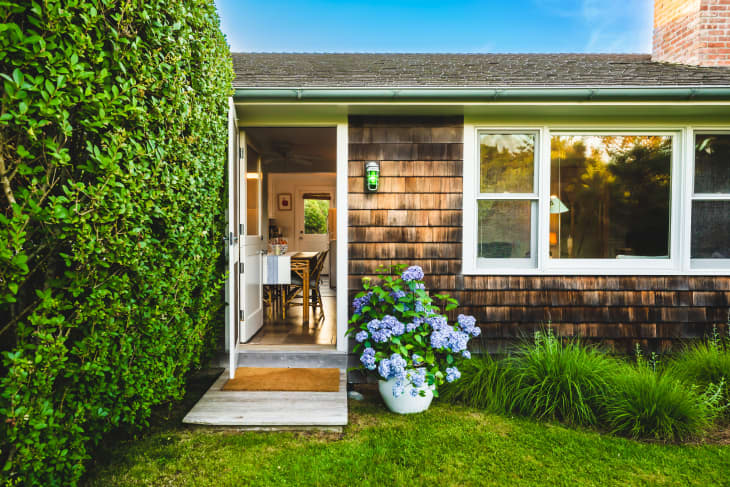Homes with the Same Square Footage Can Appear to Be Wildly Different Sizes — Here’s Why
Square footagein real estate isn’t too complex of a concept, even for a non-mathematically inclined person like myself. But I remember when it became very obvious to me that properties with similar square footage appear vastly different in person.
Six years ago, I was living in a 900-square foot studio in Staten Island with my husband and it was the largest apartment either of us had ever lived in. In fact, we knew people with one- and even two-bedroom units that had fewer square feet.
A coworker told me about how her family was bursting at the seams in their small three-bedroom, two-story home. “We’ve only got 1,000 square feet to work with,” she lamented. I nodded my way through the rest of the conversation, only asking myself this: Could our studio really be similar in size to a two-story home? As it turns out, layouts make all the difference when it comes to how big a home feels.
One-Level vs. Multi-Story Homes
You can’t ignore the rules of math: Square footage equals the length of a space multiplied by its width. But what是flexible is how that space is configured, as I learned from that conversation with my work friend. The more I thought about it, the more I could see our studio being split in half, then stacked on top of each other. I’m no architect, but I could envision “stealing” square footage from our large living and dining rooms and even — sob! — our walk-in closet to create two or even three small bedrooms.
The way square footage plays out in a home really does depend on its architectural style and layout. A ranch, for example, reveals all of its square footage on a single floor, whereas a two-story Colonial would divide it. It’s not always a fair division, as I learned.
“No matter what style [a two-floor house is], you’re going to lose square footage just from the staircase,” says Paul Morris, CEO ofKeller Williams Forward Livingin California and the New York Times bestselling author of “Wealth Can’t Wait,” who notes that hallways and corridors also take up a lot of the floorplan.
That meant the extra 100 square feet in my coworker’s home would be swallowed up by the staircase connecting the floors, making our former studio and her home roughly the same size in square footage. I was amazed.
Larger properties can lose more square footage as you go up a story. “[If there are] 2,000 square feet on one level, you can get as much usable space as you can a 3,000-square-foot on two levels,” says Morris.
打开地板计划与封闭的地板计划
The main reason I was so deceived by the comparison of our condo’s square footage to that of a house was its open floor plan. We had wood flooring as far as the eye could see, and the only dividing lines were for the bathroom, closets, and kitchen — and even that had a cut-out in the wall to make it feel airier.
Opening up that kitchen wall gets the seal of approval fromCasey Napolitano, Realtor and founder and CEO at NDA Real Estate in Beverly Hills. She coaches her clients to look beyond square footage to the “good bones” of a home.
“I show them how to transform a property to feel bigger by opening up walls, installing new windows and doors, space planning with stylish furniture and decor, and brightening spaces up with a light-colored paint,” Napolitano says. She notes that in Los Angeles, historic homes typically feature small galley-style kitchens, but buyers want open kitchens. “Spaces can feel much bigger without adding square footage,” she explains.
It’s no wonder people are in love with open-concept homes: All that openness tricks the senses into thinking that it’s much bigger than it is. Of course, with the pandemic leading us to rethink how we live and work, so much flexibility in a floor plan isn’t always such a great thing when you’re craving a bit of privacy. But if you’re thinking that you’re better off with a closed floor plan, just know that it will shrink the space.
“If you’re a family, you’re going to want privacy and rooms, and they chew up more square footage,” says Morris.
Should You Alter Your Idea of a Dream Home?
It’s easy to base your idea of a dream home on a particulararchitectural style, like a Craftsman or a Tudor. But chances are you’re thinking about it in terms ofcurb appealand not interior square footage. Sure, you might have a minimum number of bedrooms and bathrooms that you’ll need, but an experienced real estate agent will be able to show you what that will look like across many different types of homes.
“My specialty in real estate is ‘vision,’” says Napolitano. “I meet new buyers every day that tell me their frustrations with the home-buying process because they have been searching unsuccessfully on their own for months. That’s where I come in. I show them homes they would never imagine themselves in, show them what is currently there and what could be.”
In the end, how you feel in a home will determine your degree of happiness living there. And while my husband and I have since moved on from our starter studio condo, I remember feeling as if we had heaps of space to start our lives, thanks to how our square footage was laid out.

